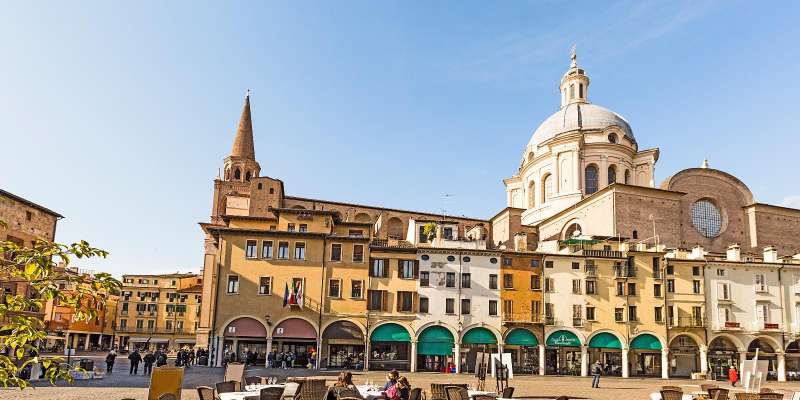- Home
- Useful Tips
- Mantua's food specialties and...
Discovering Mantua's culinary treasures can feel overwhelming for visitors. With over 80% of travelers reporting they've missed out on authentic local food experiences due to tourist traps, the stakes are high in this UNESCO-listed city. The frustration of settling for mediocre versions of pumpkin-filled tortelli or sbrisolona cake when legendary family-run trattorias sit just around the corner is all too common. Food shapes half of Mantua's cultural identity, yet most visitors leave without tasting properly aged Grana Padano or understanding why donkey stew became a local staple. This isn't just about hunger - it's about connecting with 600 years of Gonzaga dynasty heritage through every bite.


Decoding Mantua's must-try dishes (and their hidden histories)
Mantua's cuisine tells the story of its swampy Po Valley origins and aristocratic past. Start with tortelli di zucca, the sweet-savory pumpkin pasta created for 16th century banquets - the best versions balance amaretti cookies and mostarda delicately. Don't miss sbrisolona, the crumbly cornmeal cake born from peasant kitchens that's now served in fine restaurants. For adventurous eaters, stracotto d'asino (donkey stew) showcases the resourcefulness of farmers, while risotto alla pilota honors the rice workers of the Mincio delta. Local cheeses like Grana Padano and Parmigiano Reggiano from nearby dairies taste fundamentally different here than exported versions. Understanding these backstories transforms each meal from consumption to cultural immersion.
Where food lovers go for authentic Mantuan flavors
The real Mantua dining scene thrives in unassuming spots locals guard jealously. Trattoria da Bice near Piazza Sordello serves textbook tortelli in a 14th century cellar, while Osteria dell'Oca specializes in Gonzaga-era game dishes. For sbrisolona, Pasticceria La Ducale's century-old recipe beats any hotel offering. Daytrippers should visit Pescherie, the covered fish market where vendors suggest preparing local pike. Budget-conscious travelers find incredible value at family-run osterias like Ai Ranari, where €15 buys a full menu with house wine. Remember, authentic places rarely have English menus or credit card machines - bring cash and point at what neighbors are eating.
Timing your tastings like a Mantua native
Mantuans follow strict culinary rhythms that visitors often miss. Tortelli tastes best at lunch when fresh pasta is just made, while risottos shine during evening aperitivo hours. Bakeries sell out of sbrisolona by mid-afternoon - arrive before 11am for warm slices. Many trattorias close Sunday evenings and Mondays, leaving tourists scrambling. The smartest foodies plan visits around seasonal specialties: spring brings asparagus festivals, summer means frog fairs, and autumn delivers pumpkin harvest menus. Even restaurant seating follows patterns - locals dine at 1pm for lunch and 8:30pm for dinner, so arriving at 'tourist times' often means slower service as kitchens adjust.
Bringing Mantua's flavors home (without luggage smells)
The temptation to pack tortelli or bags of Grana Padano is strong, but savvy travelers know better options exist. Specialty shops like La Salumeria di Mantova vacuum-seal cured meats and aged cheeses for travel. For shelf-stable souvenirs, Antica Drogheria Pavesi sells artisanal mostarda and balsamic vinegars that capture Mantua's essence. Cooking enthusiasts can join morning pasta-making classes at Cucina Mantovana to learn tortelli techniques properly. Those short on time find excellent food halls at Mantova Train Station stocking local products. Remember, EU travelers can ship DOP-protected goods tax-free - ask shops for customs forms to avoid airport confiscations of prized salami or bagoss cheese.



